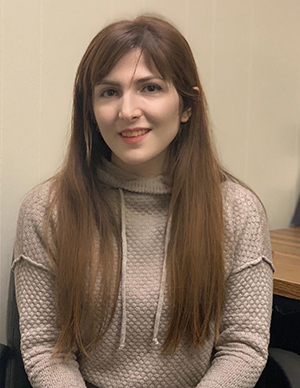Recent News
Grant Rudnick named Breece Award recipient
December 2, 2025
UNM wins demo award at International Workshop in Structural Health Monitoring
December 2, 2025
Ferenchak named chair of Transportation Research Board Pedestrian Committee
October 31, 2025
Ferenchak named APBP 2025 Research Professional of the Year
October 1, 2025
News Archives
Doctoral student wins second place in student paper competition
June 9, 2020 - by Kim Delker
Roya Nasimi, a Ph.D. student at The University of New Mexico Department of Civil, Construction and Environmental Engineering, recently won second place in a student paper competition.

The Structural Health Monitoring and Control (SHMC) Annual Paper Competition of the American Society of Civil Engineers (ASCE) Engineering Mechanics Institute (EMI) was held virtually on May 27.
Nasimi’s paper was titled “Unmanned Aerial Vehicles (UAVs) Equipped with Lasers, Cameras, and Algorithms Measuring Bridges Condition under Trains.”
Co-authors of the paper were advisor Fernando Moreu, assistant professor in the Department of Civil, Construction and Environmental Engineering; Nicolas Cobo, a Ph.D. student from the Department of Electrical and Computer Engineering, University of Puerto Rico, Mayagüez, Puerto Rico; and Jorshua Diaz, Department of Electrical Engineering, University of Ana G. Mendez University at Gurabo, also in Puerto Rico.
The multidisciplinary team presented a new system consisting of a drone, a combination of sensors, and a computer vision algorithm to acquire the total displacement of railroad bridges.
The students in contest competed in the areas of structural health monitoring, system identification, smart materials and structures, and structural control.
This work is supported by the National Academy of Sciences, under the Transportation Research Board (TRB) Rail SAFETY IDEA, titled: “Measuring Behavior of Railroad Bridges under Revenue Traffic using Lasers and Unmanned Aerial Vehicles (UAVs) for Safer Operations: Implementation”. More information about Roya’s project can be read here and here.
